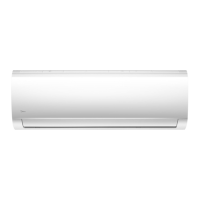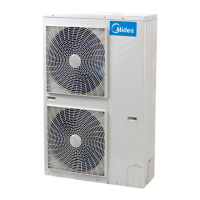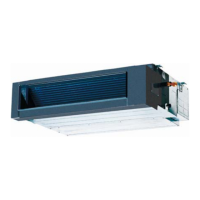
 Loading...
Loading...
Do you have a question about the Midea MSMABU-09HRDN8-QRD0GW and is the answer not in the manual?
| Refrigerant | R32 |
|---|---|
| Inverter Technology | Yes |
| Power Supply | 220-240V/50Hz/1Ph |
| Energy Efficiency Ratio (EER) | 3.21 |
| Coefficient of Performance (COP) | 3.61 |
| Cooling Capacity | 9000 BTU |
General guidelines to prevent injury and damage during operation and maintenance.
Guidelines for safe handling of flammable refrigerants during service procedures.
Details the built-in safety mechanisms and operational protections of the air conditioner.
Step-by-step instructions for adding the correct amount of refrigerant.
Steps for safely removing the compressor from the outdoor unit.
Essential warnings before performing any troubleshooting or maintenance procedures.
Table of common error codes, display information, and their solutions.
Common problems and their solutions when no specific error code is displayed.
Guides part replacement based on specific error codes for faster repairs.
Detailed diagnosis and solutions for specific error codes (TS01-TS08).
Guides for checking temperature sensors and compressor windings resistance.











